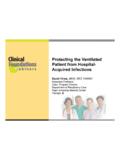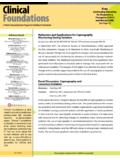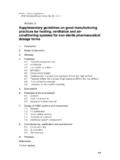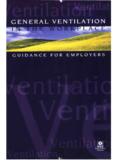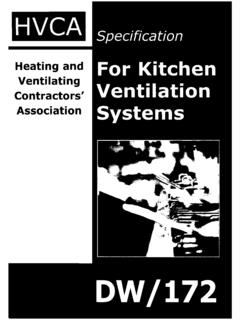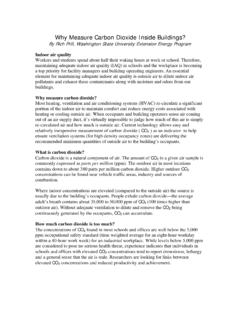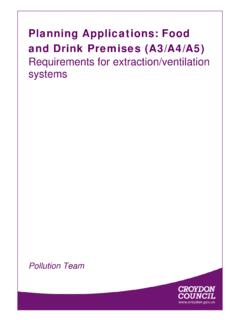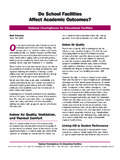Transcription of Free Foundations
1 Clinical Foundations is dedi-cated to providing respira-tory therapists with clinically relevant, evidence-based topics. Clinical Foundations is pleased to announce a we-binar series featuring leading respiratory care profession-als. To find out more about the current webinar and to register, go to Each webi-nar is accredited for CRCEs by the Branson, MS, RRT, FAARC Professor of Surgery University of Cincinnati College of MedicineCincinnati, OHKathleen Deakins, MS, RRT, NPSS upervisor, Pediatric Respiratory CareRainbow Babies & Children s Hospital of University HospitalsCleveland, OHWilliam Galvin, MSEd, RRT, CPFT, AE-C, FAARCP rogram Director, Respiratory Care ProgramGwynedd Mercy College, Gwynedd Valley, Haas, MS, RRT, FAARCE ducational & Research CoordinatorUniversity Hospitals and Health CentersAnn Arbor, MIRichard Kallet, MSc, RRT, FAARC Clinical Projects Manager University of California Cardiovascular Research Institute San Francisco, CANeil MacIntyre, MD, FAARC Medical Director of Respiratory Services Duke University Medical Center Durham, NCTim Myers, BS, RRT-NPSP ediatric Respiratory Care Rainbow Babies and Children s Hospital Cleveland, OHTim Op t Holt, EdD, RRT, AE-C.
2 FAARC Professor, Department of Respiratory Care and Cardiopulmonary Sciences University of Southern Alabama Mobile, ALHelen Sorenson, MA, RRT, FAARC Assistant Professor, Dept. of Respiratory Care University of Texas Health Sciences Center San Antonio, TXWebinarsThis program is sponsored by TeleflexMC-000139 ClinicalFoundationsA Patient-focused Education Program for Respiratory Care ProfessionalsFree Continuing Education for Respiratory Therapists (CRCE)and Nurses (CNE) See Page 12 Advisory BoardHumidification During Invasive and Noninvasive VentilationBy Ruben Restrepo, MD, RRT, FAARC and Brian Walsh, RRT-NPS, ACCS, FAARCH umidification of inspired gases is a standard of care for patients receiving me-chanical ventilation . However, several challenges exist regarding optimal delivery of humidification in the ventilated patient that include the type of humidification device used and issues external to the humidifier s function. There are two broad categories of humidification used with mechanical ventilation ; passive (unheated) and active (heated).
3 Under normal conditions, most commonly available heated humidifiers (HH) follow the recommendations made by the AARC clinical practice guidelines. Ambient temperature, gas temperature (prior to the humidifier), the heater humidifier, the ventilator type, and the ventilator settings may adversely affect adequate warming and humidification of inspired gases. Continuous place-ment and removal of aerosol generators during mechanical ventilation and the effects that humidification and heat have on aerosol delivery are important con-siderations in the ICU setting. This review focuses on a number of frequently en-countered situations that affect humidification in the clinical setting during the administration of invasive and noninvasive ventilation (NIV).Panel Discussion: Humidification During Invasive and Noninvasive VentilationModerator: Ruben Restrepo, MD, RRT, FAARCP anelists: Robert Joyner, PhD, RRT, FAARC Leo Wittnebel, PhD, RRT Hui-Ling Lin, MSc, RRT, RN, FAARC Humidification is an essential component of patient ventilation .
4 In this panel dis-cussion, 3 experts discuss themes related to optimal humidification, including op-timal humidity for invasive vs noninvasive humidification, means to detect wheth-er humidification is working, where to place the aerosol generator to minimize the effect on aerosol deposition, where within the circuit to monitor temperature, whether it is advantageous to have a humidifier that allows adjustments to abso-lute and relative humitidy, and other topics. Clinical of inspired gases is a standard of care for pa-tients receiving mechanical ventilation . However, several challenges exist regarding optimal deliv-ery of humidification in the ventilated pa-tient that include the type of humidifica-tion device used and issues external to the humidifier s function. Inadequate humid-ification of medical gases could have very deleterious effects on airway There are two broad categories of humidi-fication used with mechanical ventilation ; passive (unheated) and active (heated).
5 Under normal conditions, most com-monly available heated humidifiers (HH) follow the recommendations made by the AARC clinical practice guidelines. They deliver absolute humidity (AH) that rang-es from 33 mg H2O/L to 44 mg H2O/L at gas temperatures between 30 C and 37 C, , 3 Ambient temperature, gas temperature (prior to the humidifier), the heater humidifier, the ventilator type, and the ventilator settings may adversely affect adequate warming and humidification of inspired gases. Continuous placement and removal of aerosol generators during mechanical ventilation and the effects that humidification and heat have on aerosol delivery are important considerations in the ICU setting. This review focuses on a number of frequently encountered situ-ations that affect humidification in the clinical setting during the administration of invasive and noninvasive ventilation (NIV).Delivery Of Heated Humidification During Invasive ventilation Although HHs are considered the most efficient devices in providing the optimal conditions to the gas delivered to patients with an artificial airway,4,5 unde-tected partial obstruction of the artificial airway may compromise the patient s ability to wean off of mechanical ,7 Therefore, a good understanding of how HHs function and how they inter-act with different mechanical ventilators at different settings and clinical condi-tions is critical to those caring for patients receiving mechanical ventilation .
6 First and foremost, it is very impor-tant to remember that heated humidifi-ers control temperature not humidity levels. Although gas at the ventilator inlet may range from 22 C to 26 C,8 this tem-perature may increase depending on the type of ventilator used. However, the gas temperature drops as it travels through the inspiratory limb between the ventila-tor gas outlet and the heated humidifier inlet, also known as the dry part of the circuit. After gas enters the humidifier chamber, the heater warms to the preset humidifier chamber temperature. In the pass-over humidifier, the rate of evapora-tion and humidity output increase as wa-ter in the chamber increases in tempera-ture. As more water vapor is produced, more energy from the heater is required to maintain the set temperature. A rou-tine check of the heater humidifier and the breathing circuit may reveal visible signs of humidity production.
7 The most common signs are the rate at which water is lost from the chamber and the amount of condensation formed in the breathing circuit. A small amount of condensation or rainout in the circuit typically en-sures proper humidifier function while excessive condensation may indicate that a decrease in the temperature may be re-quired. Heated wires are used to ensure a temperature gradient of 1 C to 3 C be-tween the water source and the patient Y to reduce cooling of the gases and there-fore condensation. Ambient Temperature. High ambient temperature influences HH Inadequate air con-ditioning, burn units, neonatal units10 or warm conditions proximal to the humidi-fier can increase ambient air temperature. When ambient air temperatures exceed 30 C, a greater reduction in humidity levels would be expected as the increased inlet temperature stops the heater plate from warming the water inside the cham-ber.
8 Similar conditions are seen during winter months when heated rooms may create higher-than-normal temperatures. During summer months excessive cool-ing from air-conditioning outlets affects the gas temperature as it travels through the humidifier and the breathing circuit. Because a considerable amount of con-densate may form, clinicians must exert extreme caution to avoid lavaging the pa-tient s airway as water accumulates in the breathing circuit near the endotracheal tube. If the room temperature cannot be changed, it may be necessary to lower the temperature setting to avoid uncontrol-lable water condensation in the breathing circuit or increase the temperature gradi-ent between the HH and the circuit. How-ever, careful monitoring for signs of inad-equate humidification must take place. Impact of Gas Chamber Temperature. A key element of proper humidifier functioning is the inlet chamber gas tem-perature.
9 If it is very high, the heater may simply stop warming up without major generation of kinetic energy as the pre-set temperature is reached, since there is a strong inverse correlation between the inlet chamber temperature and heater Higher gas inlet tempera-tures may be associated with an evident decrease in humidity production, from approximately 36 mg H2O/L at a humidi-fier inlet gas temperature of 18 C (82% relative humidity at 37 C) to 26 mg H2O/L Humidification During Invasive And Noninvasive VentilationBy Ruben Restrepo, MD, RRT, FAARC and Brian Walsh, RRT-NPS, ACCS, FAARCF irst and foremost, it is very important to remember that heated humidifiers control temperature not humidity levels. Clinical a humidifier inlet gas temperature of 32 C (59% relative humidity at 37 C).8 These humidity changes visibly translate to the amount of condensate present in the breathing circuit. On average, at a set-ting of 37 2 C at the patient Y adapter approximately 14 g of condensate forms in the breathing circuit over 4 hours.
10 At 40 3 the amount of condensate dramati-cally drops to 3 Even under the best ambient conditions and after following manufacturers recommendations regard-ing temperature settings, AH may range from 19 mg H2O/L to 36 mg H2 Under constant flow conditions, the pres-ence of inlet gas temperatures >26 C may be associated with humidity levels <30 mg H2O/L (68% RH at 37 C), which does not meet the recommended level of hu-midification for mechanically ventilated of Ventilator Outlet Gas Temperature. It is well known that some mechanical ventilators utilized within the ICUs warm inlet oxygen and ,9 The high speeds of turbine or blower-powered ventilators generate the highest outlet temperatures. This effect can be confirmed by measur-ing the mean change in temperature be-tween the ventilator s gas inlet and outlet. This temperature gradient could be as low as C or as high as C. These temperature gradients may create inlet chamber temperatures between C and C when ventilators run under normal ambient air temperature (23 C) and low minute volumes (10 L/min), and temperatures between C and C when ambient temperature is high (29 C) and minute volumes are high (20 L/min).
